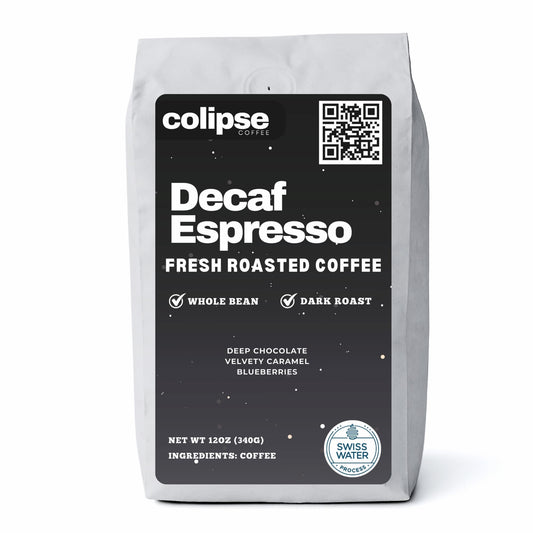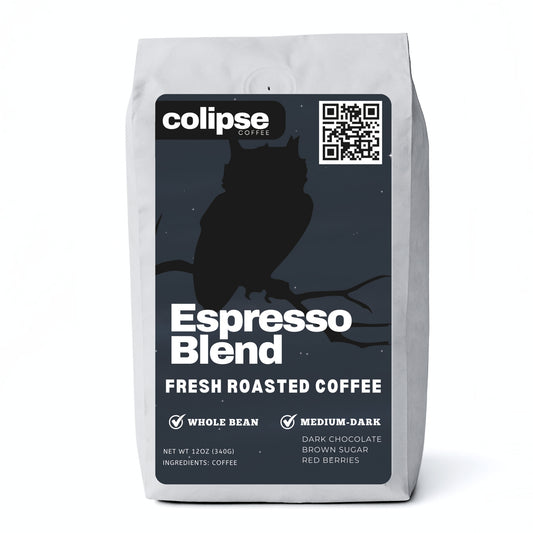Brazilian Sul de Minas Coffee Beans
Brazilian Sul de Minas Coffee Beans
Couldn't load pickup availability
Colipse Brazilian coffee is a medium roast, single origin Arabica coffee from Fazenda Capoeirinha in Sul de Minas, a top specialty producer. It is made of pure Brazilian coffee beans including Mundo Novo, Acaia, Catuai, and Bourbon varietals.
This coffee undergoes natural processing, where the beans dry with the fruit intact, enhancing the bean's sweetness. It delivers notes of dark chocolate, brown sugar, and caramel.
Each order is roasted fresh in small batches, vacuum-packed in recyclable bags, and available in 12 oz, 16 oz, 2 lb, and 5 lb sizes. Choose whole beans for espresso machines like Breville, Gevi, and DeLonghi, or super-automatic machines like Jura, Philips, and Saeco. Select coarse, medium, or fine grind for various brewing methods.
Order Brazilian whole bean coffee from Colipse and enjoy one-of-a-kind coffee experience from South America delivered within 5 days for peak freshness.
Product Description
Product Description
- Roast Level: Medium
- Origin: Sul de Minas, Brazil – one of the country’s premier coffee-growing regions.
- Altitude: 950–1,100 meters above sea level.
- Varietals: Mundo Novo, Acaia, Catuai, and Bourbon.
- Harvesting Method: Selective harvesting – only ripe cherries are picked.
- Processing Method: Natural (dry-processed), allowing fruit sugars to infuse into the bean.
- Farmers/Cooperatives: Produced by Fazenda Capoeirinha, an established specialty farm
Flavor Profile
Flavor Profile
Naturally processed for mild acidity, boasts a smooth, full body and distinct sweet, nutty notes. It finishes cleanly and lingers, making it ideal as a low-acid fresh whole bean choice.
- Acidity: Mild to low
- Flavor Notes: Dark chocolate, brown sugar, caramel, citrus, and mandarin orange
- Body: Smooth and full-bodied
- Aroma: Warm, sweet, with cocoa and citrus hints
- Sweetness: Notably sweet, especially from the dry process
- Bitterness: Low bitterness, well-balanced with sweetness and acidity
- Aftertaste: Clean and lingering finish
- Cup Clarity: High clarity with a clean, bright cup
- Transparency: Distinct, easily identifiable flavor notes
- Complexity: Moderately complex—layers of sweetness, fruit, and richness
Delivery
Delivery
Order Brazilian whole bean coffee online and get free delivery for all shipments within the United States.
Your coffee is roasted to order for maximum freshness. Expect weekday orders to ship within 24 hours and weekend orders on Monday, with delivery in 3-5 business days.
How to Make
How to Make
For pour-over, use 20 grams of medium-ground Brazilian coffee, ensuring even saturation for a clean, rich cup. For cold brew, coarsely grind beans, mix 1 cup coffee with 4 cups cold water, and steep in the refrigerator for 12-24 hours before straining.
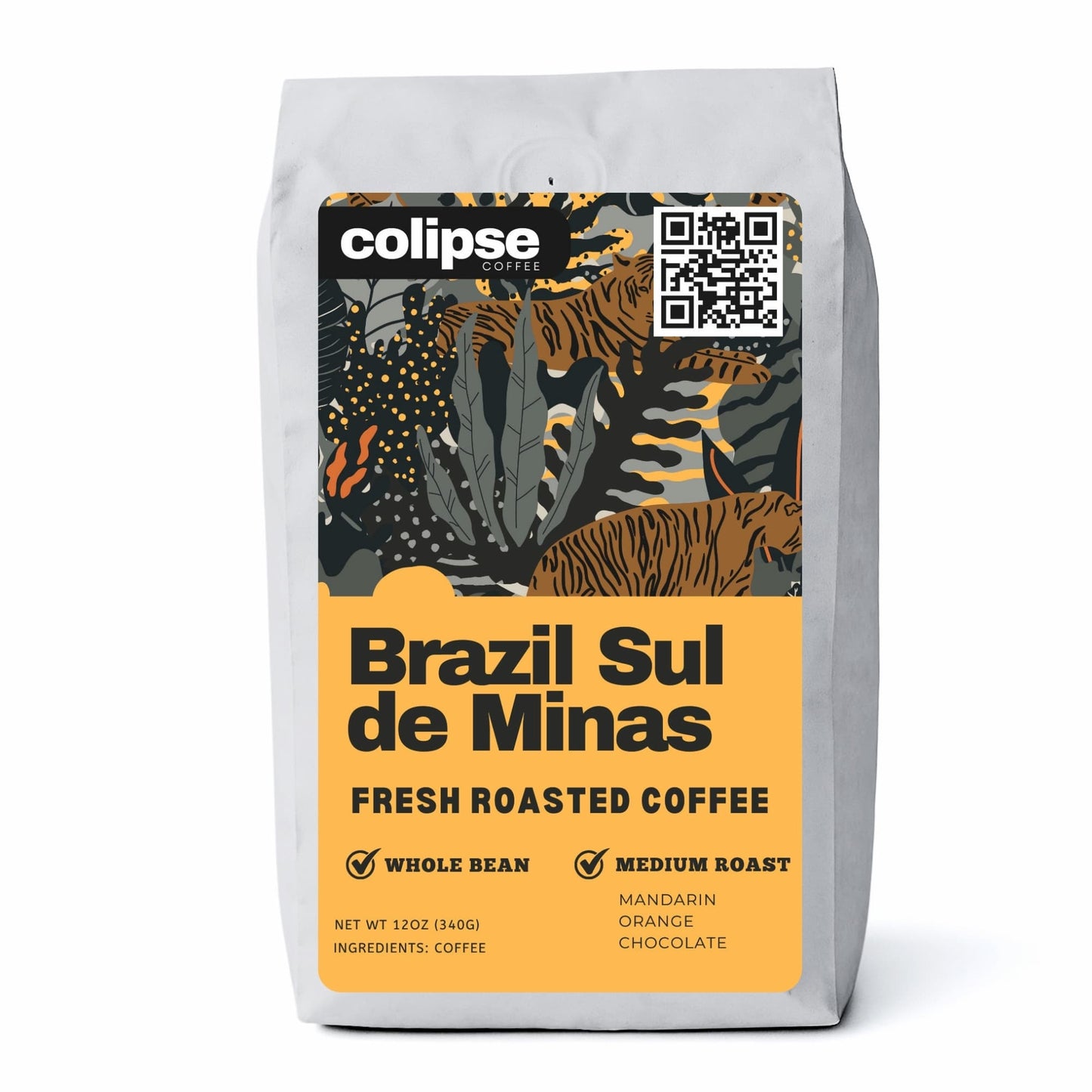
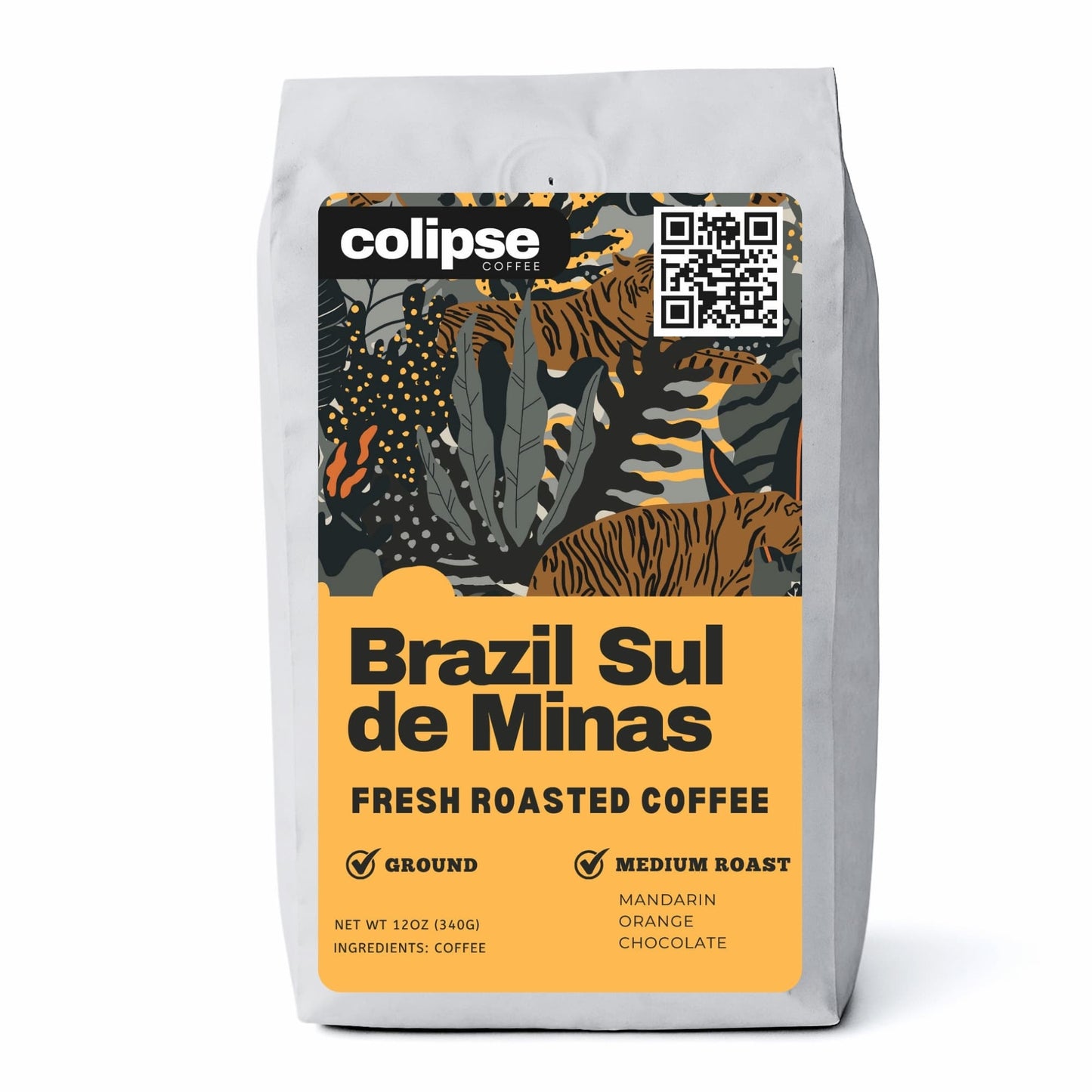
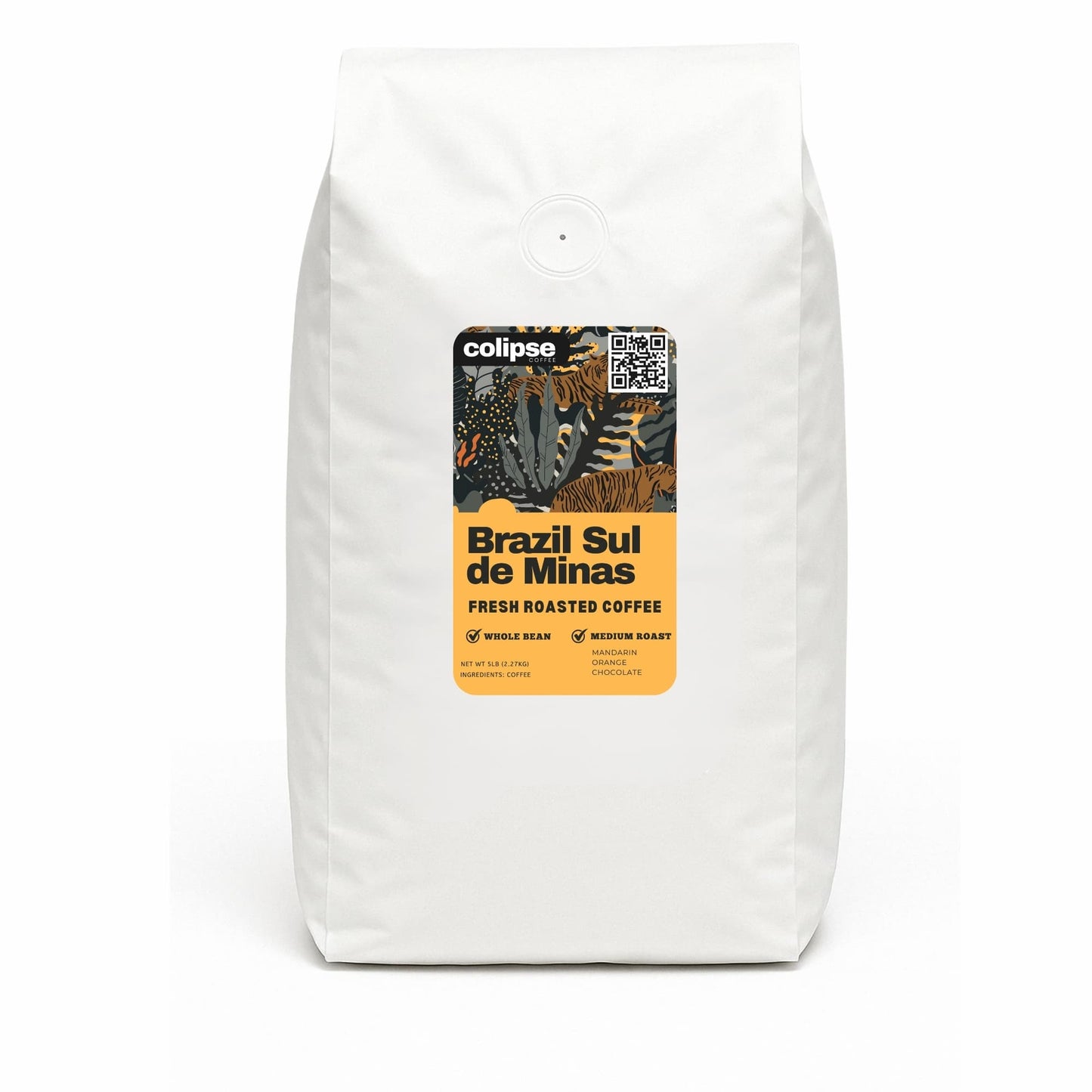
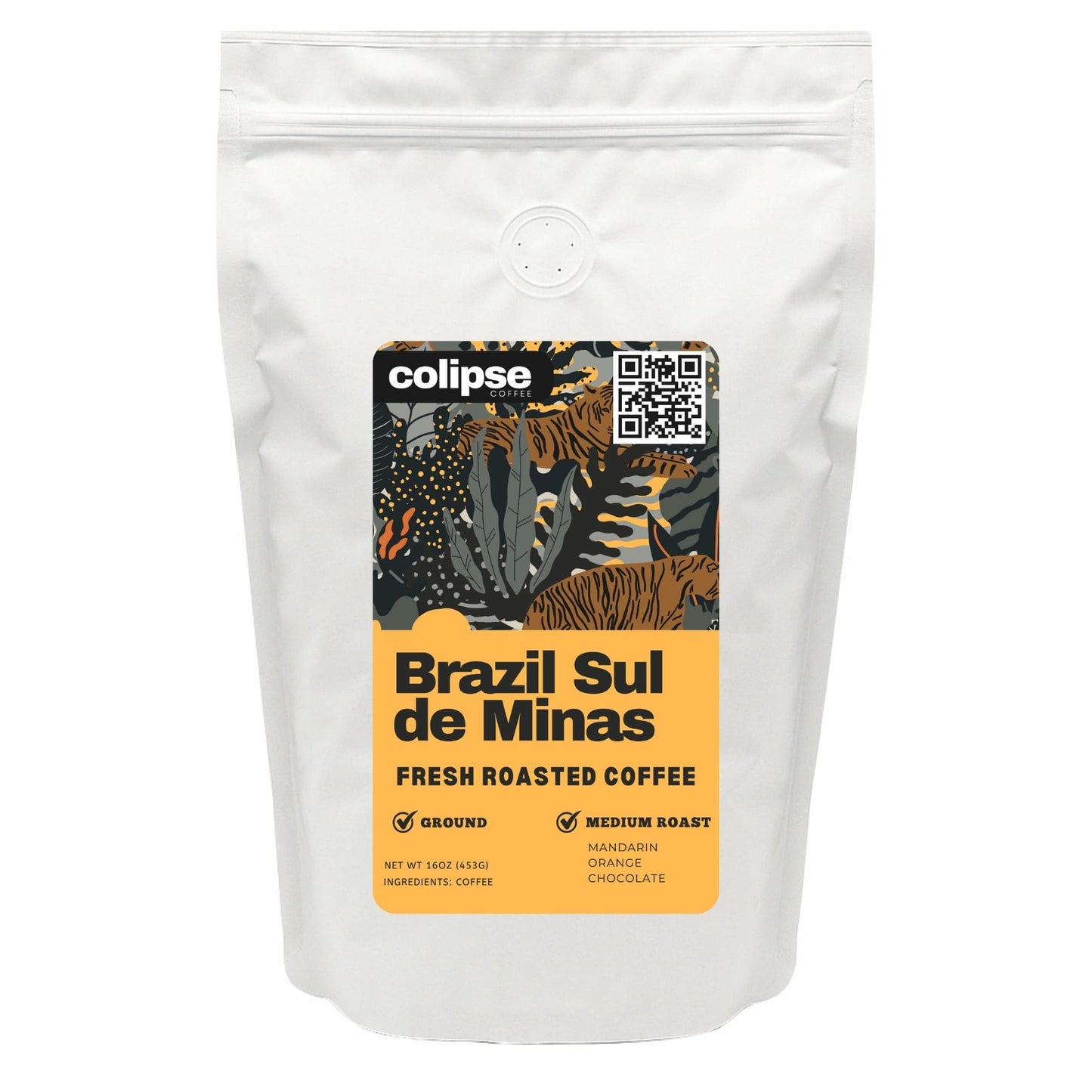
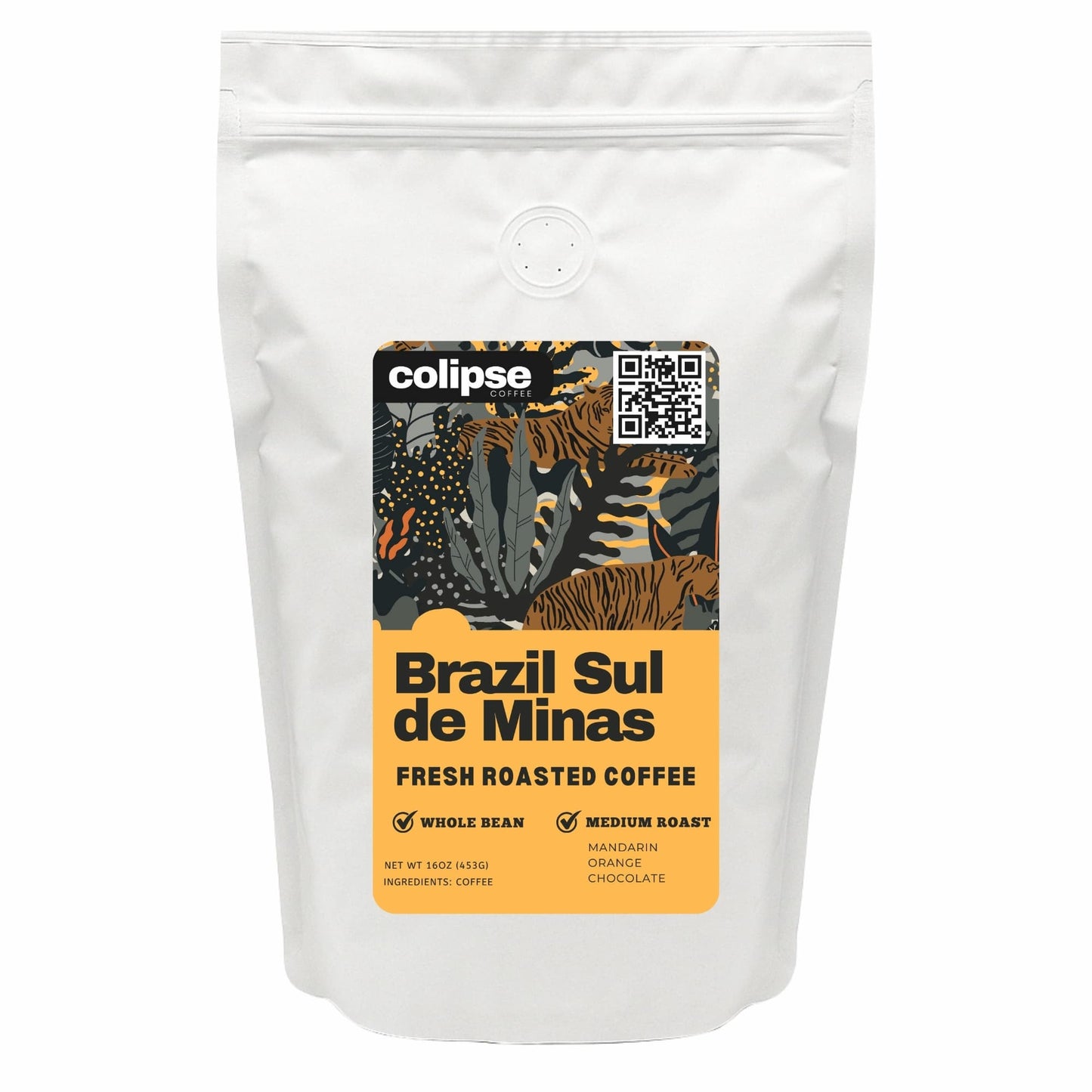



You May Also Like
-
Decaf Espresso Beans Swiss Water® Process
Regular price From $22.50 USDRegular priceUnit price / per$24.95 USDSale price From $22.50 USDSale -
Espresso Blend Coffee
Regular price From $21.99 USDRegular priceUnit price / per$24.99 USDSale price From $21.99 USDSale -
Cowboy Blend Coffee - 12 oz
Regular price $20.99 USDRegular priceUnit price / per$24.50 USDSale price $20.99 USDSale
Frequently Asked Questions
Where to buy Brazilian coffee beans?
Brazilian coffee beans can be purchased on the Colipse website. Customers will find various deals, including discounts, sale offers, and subscription deals, all priced competitively against brands such as Onyx Coffee Lab, La Colombe Coffee, and Stumptown.
How to store Brazilian coffee beans?
To keep Brazilian whole bean coffee fresh, store it in its original bag (with the one-way valve) or in an airtight container. Keep it in a cool, dry place, away from direct sunlight. Unopened, it will last up to 3 months thanks to the vacuum sealing and one-way valve. Once opened, it should stay fresh for 4-6 weeks.


